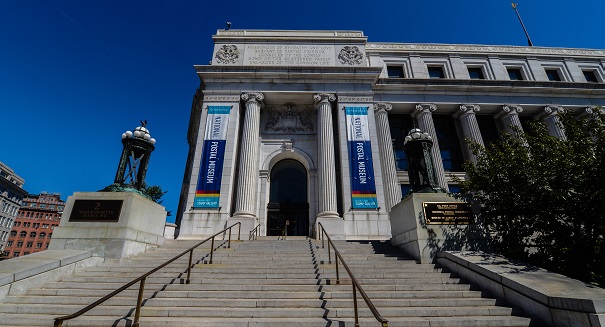
The Smithsonian National Postal Museum in Washington, D.C., is honoring black history through an exhibit that links the U.S. Postal Service with the fight for freedom and civil rights.
The Smithsonian National Postal Museum in Washington, D.C., is honoring black history through an exhibit that links the U.S. Postal Service with the fight for freedom and civil rights. Freedom Just Around the Corner opens Feb. 12, 2015, and concludes next year, Feb. 15, 2016.
The exhibit examines 150 years of African-American life starting with the end of the Civil War. Letters were often carried by slaves but in order to do that, the slaves had to have a written endorsement. The letters were either taken to the post office or delivered directly to the recipient.
While making the journey to and from the mail recipient, slaves would overhear news about the war or slave issues or anything else of importance. Sometimes, the letters were addressed to plantation owners and dealt with the sale of the one delivering the letter. One such piece of correspondence was carried by a 16-year-old girl detailing the arrangements for her to be sold. Since most slaves could not read or write, they did not know the contents of the letters they were asked to deliver.
Abolitionists worked to end slavery long before the Civil War began. The low cost of postage made the mailing of anti-slavery literature easy. Southerners viewed these mail campaigns as attacks supported by the federal government. They raided post offices, burning anti-slavery newspapers.
Even though slavery and the Civil War ended in 1865, former slaves faced new opposition in the form of Jim Crow laws, the Ku Klux Klan, and racial segregation. Part of the National Postal Museum exhibit honors black history by examining the effects these racial attacks had on the postal service. Post offices and employees became a growing target at the end of the 19th century. Hundreds of African-Americans had been appointed as postmasters by President William McKinley from 1897 to 1901.
The exhibit contains letters postmarked from the Tuskegee Army Flying School in Alabama during World War II. The Tuskegee Airmen were African-American aviators and ground crew who were part of the Army Air Corps. They were highly respected for their numerous, successful missions during the war.
Civil rights issues after WWII are exhibited with letters addressed to and from the NAACP and the White House. A 1999 commemorative stamp with Dr. Martin Luther King on the cover depicts his I Have a Dream speech. Stamps also honor the women who fought hard to expose mistreatment and deaths of African-Americans to the nation. In 1978, the long-running Black Heritage Stamp Series was created to feature prominent African-Americans from different professions in the arts, sciences and politics.
The National Postal Museum exhibit provides an all-encompassing look at black history through the U.S. Postal Service. From slaves delivering messages to individuals honored for extraordinary achievement, postmarks and envelopes reflect the changes over 150 years. These changes are part of African-American history in America.
Leave a Reply